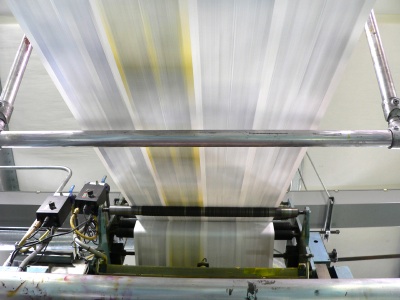
A case between the Associated Press and All Headline News is moving forward based on a 90-year-old legal doctrine which may no longer be applicable in the Internet age. A federal judge ruled that the AP can sue AHN for stealing its “hot news.”
The AP’s beef against AHN appears to have more merit than when it tried to go after bloggers for merely linking to its stories without changing the headlines. AHN itself sells news feeds and headlines to other Websites, newspapers, and digital signage companies. The AP alleges that AHN simply copies the AP’s headlines and news without permission and without paying a syndication fee, and then resells those headlines and news stories as part of its own feeds with all AP accreditation stripped out.
If that is what happened, it does sound like pure theft. But rather than simply sue AHN for copyright infringement, the AP is also invoking the “hot news” doctrine, which treat news scoops as a form of property. Hot news is defined as time-sensitive news that is gathered at a cost, which a competitor then reproduces, free-riding on the original news-gathering organization’s efforts. The Prior Art blog has a good discussion of the legal history (sentence bolded for emphasis):
The “hot news” doctrine that The Associated Press now wants to enforce is actually a product of a much earlier AP litigation. “Hot news” originates in a lawsuit that AP brought 90 years ago against a competing news service, International News Service (INS), which was owned by Hearst and later became part of United Press International (UPI). “In 1918, INS was unable to provide its clients with news stories from the war zones because, having been accused of violating wartime censorship restrictions, it was barred from use of the British and French mail and cables,” writes the AP in its brief against AHN. INS solved that problem by grabbing early editions printed in AP newspapers and sending them to its own clients. INS even bribed employees of the AP and AP member newspapers to get AP’s news before it was published.
Ultimately, the Second Circuit found that AP had a property right, separate from copyright, in the news that it sold, “arising from the labor and expense involved in its gathering and disseminating that news.” This right could only be used against competitors and only lasted as long as the news had commercial value. The case then went to the Supreme Court, which voted 5-3 in favor of the AP’s “quasi property” and upheld the 2nd Circuit decision.
Let me repeat that bolded part: “This right could only be used against competitors and only lasted as long as the news had commercial value.”
Basically, the judge says the AP can try to prove AHN stole it’s “hot news”. But what constitutes “hot news” in an age of instant communications? And how long does it last. In 1918, “hot news” traveled by mail and telegraph. It could last hours or even days. Today, a true scoop lasts for about a minute. The AP would have to show instances of articles where not only the AP broke the news, but was the only outlet to get the original story—something rarer and rarer when anyone can publish news over the Internet.
It also raises some troubling questions. Is the AP going to start suing bloggers or news aggregators who take an AP headline and excerpt and rebroadcast it to the world, even with a proper link and attribution? And what happens when the AP is scooped by bloggers, which happens every day. Should bloggers sue the AP? Will people who break news on Twitter claim scoop status, and sue all the bloggers and news outlets who pile on afterward? It could get pretty messy.
Hot news is a concept best left in the twentieth century. Lawsuits like this one just brings home the point that the AP is more concerned with defending its antiquated business model than with moving forward and adapting to the realities of today’s information flows.





























Comment